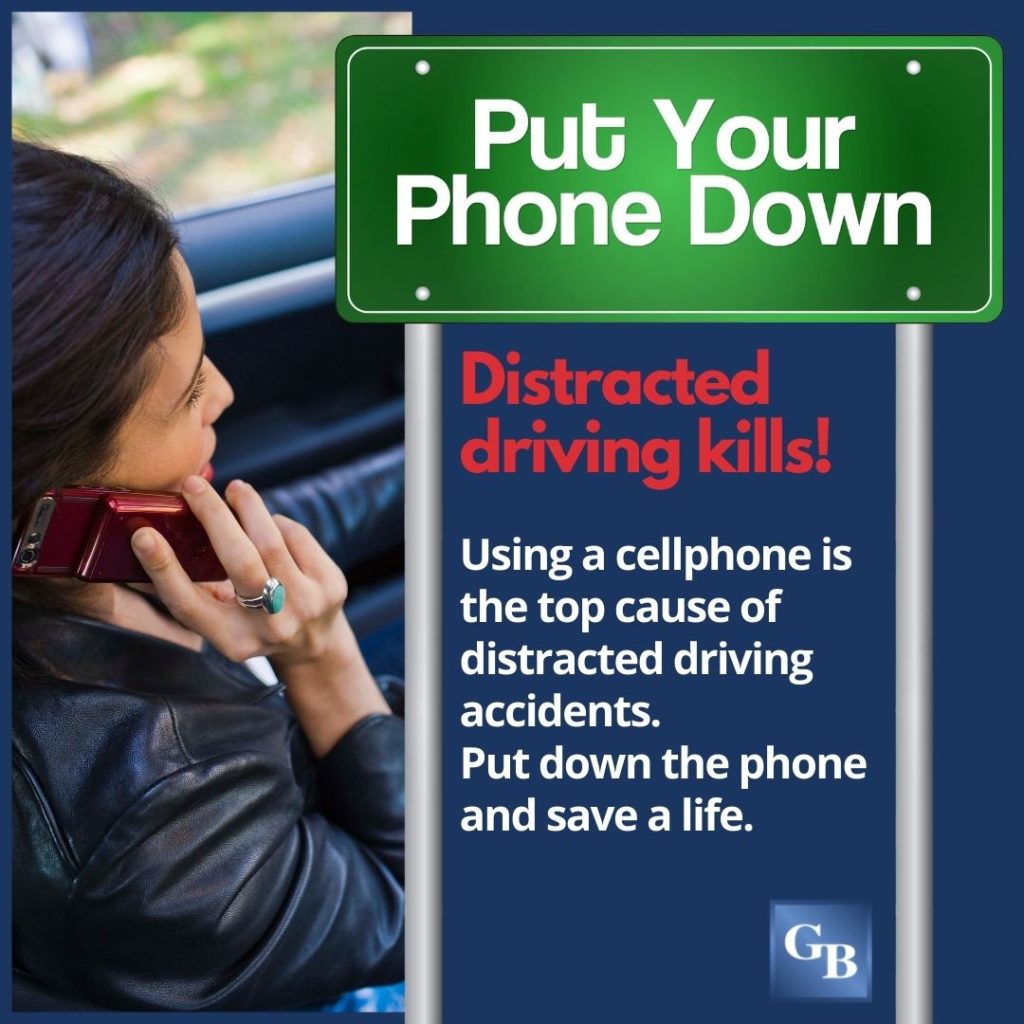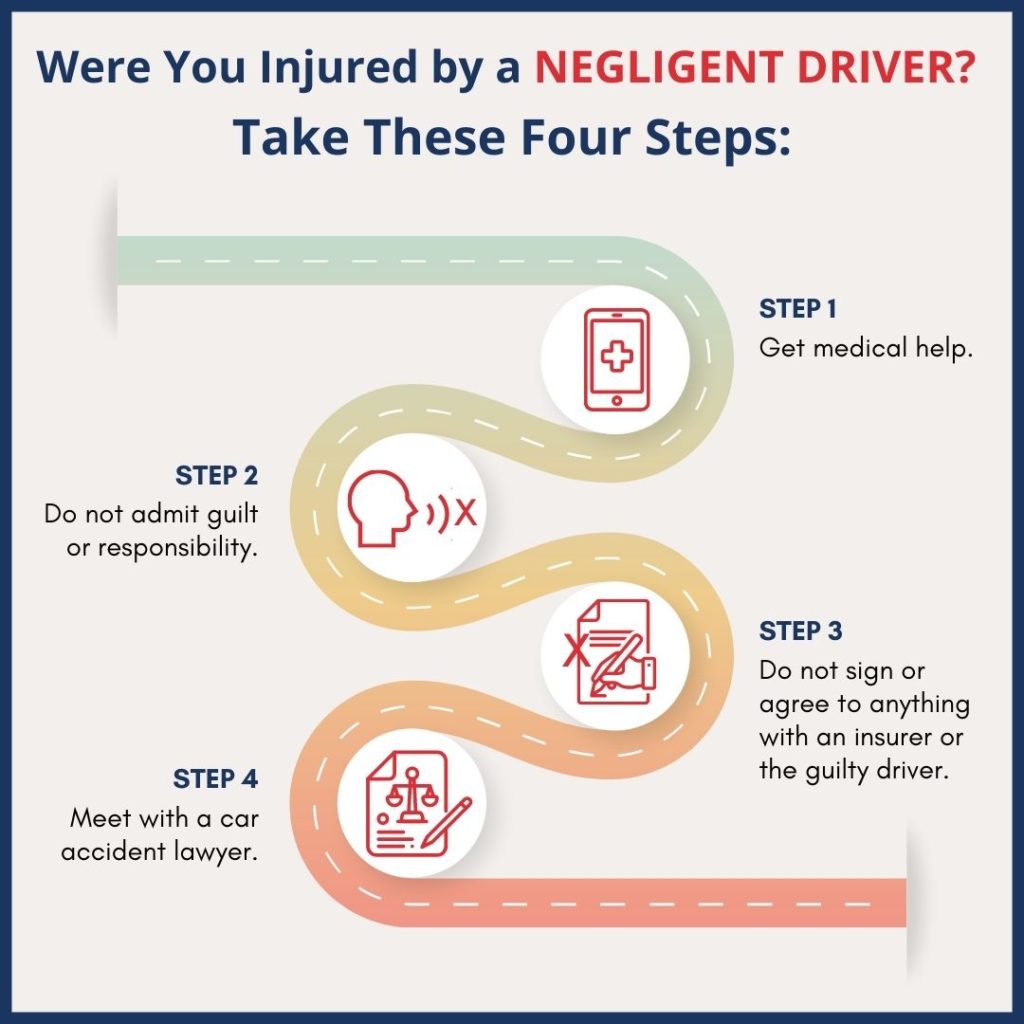Car accidents are the leading cause of death and emergency room visits across the United States. After a car accident, you could be left with physical, emotional, and financial devastation. You may have permanent injuries and loss of income as well. Even a seemingly minor accident may have negative consequences.
You should consult a car accident lawyer as soon as possible after a severe collision. The reason is that insurance companies will never cover the total costs of damages in an accident. They are in the business of minimizing their losses.
Knowing the causes of car accidents can help motorists drive more defensively. The following are the top causes of car accidents in the United States.
Distracted Driving
Anything that takes a driver’s eyes off the road, hands off the wheel, and focus off driving is a distraction and of course, is one of the causes of car accidents. Common distractions include:
- Cellphone use, such as talking, texting, using social media, and taking photographs and videos.
- Fiddling with car controls and the navigation system.
- Loud or rowdy passengers.
- Eating and drinking.
- Children and pets.
- Getting lost in thought or conversation.
- Rubbernecking.
Speeding
When a motorist speeds, they automatically have less control over their vehicle; they cannot stop or slow down quickly. Steering is more difficult, lane changes are more hazardous, and nearby drivers can be at risk as well, making this one of the larger causes of a car accidents.

Impaired Driving
Some people still choose to get behind the wheel drunk or high, despite plenty of safety campaigns and information about the dangers of driving under the influence of drugs and alcohol. Thousands of people die each year because of impaired drivers. Every one of these deaths could have been prevented.
Rain
Rain is dangerous for two reasons: it impairs visibility and creates slick roads and ponding. Driving over pooled water can cause a car to hydroplane, which is hazardous to the driver and nearby motorists.
Snow and Ice
Those in winter-weather states like Pennsylvania must face dangerous snow- and ice-covered roads for months. Many motorists think they can drive easily on these roads because they have four-wheel drive or a heavy vehicle, but this is not true. Winter roads call for lower speeds and more attentive driving, no matter the vehicle.
Reckless Driving
Reckless driving encompasses many kinds of dangerous operations that can cause serious accidents, such as:
- Tailgating.
- Changing lanes quickly or without leaving clearance.
- Weaving in and out of traffic.
- Disregarding traffic signals.
- Aggressive driving.
- Speeding.
Running Red Lights
Drivers who plow through red lights are a menace to everyone on the road and contribute to many of the different causes of a car accidents. They are often the source of side-impact collisions with drivers who have the right-of-way. Side-impact crashes can cause serious injuries and even death.
Ignoring Stop Signs
Drivers in a hurry or those who are distracted may not see stop signs. This puts other motorists in grave danger of a rollover or side-impact collision that could cause severe damage to them and their vehicles.
Nighttime Driving
Statistics show that most accidents happen in the dark. Reasons include less visibility, nighttime driving vision problems, and driver fatigue. Those who know they have trouble driving at night or are tired should wait until daylight to drive.
Wrong-Way Driving
Each year, there are hundreds of wrong-way driving accidents that cause fatalities. Many of these accidents happen when cars go the wrong way on interstates and highways. These collisions are usually head-on, which is extremely difficult for anyone to avoid.
New Drivers
Everyone was once a new driver, albeit with varying levels of practice and skills. The main issue is that new drivers have not faced many driving situations and may not know how to react.
Unsafe Lane Changes
Most people have had the frightening experience of someone trying to unsafely change lanes in front of them. This might happen because of the other driver’s blind spot obscuring your car. That is why a visual check, in addition to side and rear mirror checks, is critical when changing lanes.
Improper Turns
Stoplights, turn signals, and turning lanes are designed to help make turns safer. Unfortunately, turns are still a common cause of accidents, especially left turns in front of oncoming vehicles. Drivers may also turn quickly without warning or make an illegal U-turn, increasing the risk of an accident.
Tailgating
Severe injury and even death can occur when one driver follows too closely behind another, especially at high speeds. Tailgating is a form of aggressive driving, and there is never any reason for someone to drive this way. You should leave one car length between you and the vehicle in front of you for every 10 miles per hour you are driving. For example, 60 miles per hour equals six car lengths between you and the car in front of you.
Design Defects
Vehicles have hundreds of parts. If any one of them is defective or becomes worn or breaks, a serious accident can result. Car owners always need to maintain their vehicles and make repairs swiftly when required. In addition, they should obey all recall notices.
Road Rage
Unfortunately, aggressive driving causes too many accidents and injuries on the road. Anger usually comes from a perceived slight or unintentional driving error. The enraged motorist may try to run the person off the road, tailgate them, cut them off, or otherwise use their vehicle as a weapon.
Potholes
Streets and highways that are not adequately maintained, especially in the winter and spring, can become homes for hundreds of potholes. These dangerous gaps in the roadway can cause drivers to lose control or blow out a tire.
Tire Blowouts
Tire blowouts make a vehicle almost impossible to control. Semi-trucks and other commercial vehicles are prone to dangerous tire problems like these. Drivers of any vehicle should always check their tires before hitting the road, especially for long trips.
Drowsy Driving
Commercial truck drivers are not the only motorists prone to drowsy driving. Car drivers will often push their limits and drive into the night or too early in the morning when they have not had adequate rest. Drowsy driving impairs reaction time, increases the chance of falling asleep, and it often clouds good decision-making.
Fog
Many parts of the country are inherently foggy. Fog can obscure the visibility of cars directly in front of you Many chain-reaction car accidents happen due to fog.
Deadly Curves
Some drivers will take sharp curves or turns too fast. No matter the speed limit, curves and turns need to be navigated at lower speeds and with caution. Drivers can quickly lose control on a curve, harming themselves and other motorists.
Animals
Deer cause the most animal-related car accidents. They jump out with no warning, leaving hapless drivers unable to react in time. Other animals, too, will forage for food and shelter in the twilight, making them hard to see.
Some drivers will slam on their brakes or swerve for an animal in the road, causing an accident. Swerving can cause you to move into the lane of another car, which may cause a significantly more catastrophic accident.
Construction Zones
Road construction often requires lanes closures and restrictions, merges, detours, and other changes to traffic patterns.
Drivers who are not paying attention to road signs may be surprised by construction zones, which increases the chance of an accident. The existence of construction zones does increase the chance of an accident.
Traffic Jams
When traffic stops or slows quickly, some distracted or speeding drivers will not have time to react, resulting in a rear-end collision. A driver should always be prepared to stop quickly.
What Should I Do if I am in a Car Accident?
These steps can help you if you are in an accident:
- Call 911. Getting medical help is the priority. Always accept medical help on the scene, even if you do not feel your injuries are serious.
- Give honest answers to police questions.
- Do not admit guilt or responsibility for the accident.
- Get the offending driver’s name, along with their license plate number, contact information, and insurer.
- Memorize or write down as many details as possible. Memories fade quickly, so note any relevant information for future use.
- Take pictures and videos of the scene. Show damage to and position of the cars, injuries, strewn parts, weather, and road conditions.
- Talk to bystanders and witnesses. Get their names, contact information, and statements about what they saw. Record them if possible.
- Get a copy of the police report. This is especially important if the other driver may have been impaired in any way.
- Keep records of all medical visits, receipts, correspondence with your employer and insurer, proof of lost or reduced wages, and other documentation about the physical and financial damage sustained from the accident.
- Do not accept an insurance company’s first offer. It will never cover your total damages. You can negotiate with them with the help of a lawyer.
- Consult with a car accident lawyer before signing or agreeing to anything.

How Can a Lawyer Help Me After a Car Accident?
If you have injuries, a lawyer can help you determine whether you have a legal claim against the driver who caused the accident. Sometimes, there is a valid legal claim against a third party, such as a carmaker, parts manufacturer, or a municipality that did not keep their roads safe.
If you do have a claim, a lawyer is invaluable in helping you understand insurance laws. They can determine if you are eligible for compensation for your damages, including medical bills, loss of income, pain, and suffering, and more.
Pennsylvania has specific laws that a lawyer can further explain:
- Most car accidents lawsuits must be filed within two years in the commonwealth’s civil court system. You should talk to a lawyer about these important time limits.
- Pennsylvania operates under a modified comparative negligence rule, which allows for financial recovery only if the plaintiff is 50 percent or less responsible for causing the accident.
If you have a valid legal claim, your lawyer can use their vast negotiation skills to help you get fair and just compensation. If they cannot agree on a suitable settlement offer, they can take the case to court on your behalf. They will build a compelling case strategy and collect evidence from all sources, including accident reconstruction and medical experts. Most of all, a lawyer can ease the stress and worry from the accident, letting you heal as they advocate on your behalf.
Philadelphia Car Accident Lawyers at Galfand Berger LLP Can Help You Determine the Cause of Your Accident
If you have been injured in a collision, one of our Philadelphia car accident lawyers at Galfand Berger LLP can review your case. Call us at 800-222-USWA (8792) or complete our online form for a free consultation. Located in Philadelphia, Bethlehem, Lancaster, and Reading, Pennsylvania, we serve clients throughout New Jersey and Pennsylvania, including Allentown and Harrisburg.
 Google Screened
Google Screened
